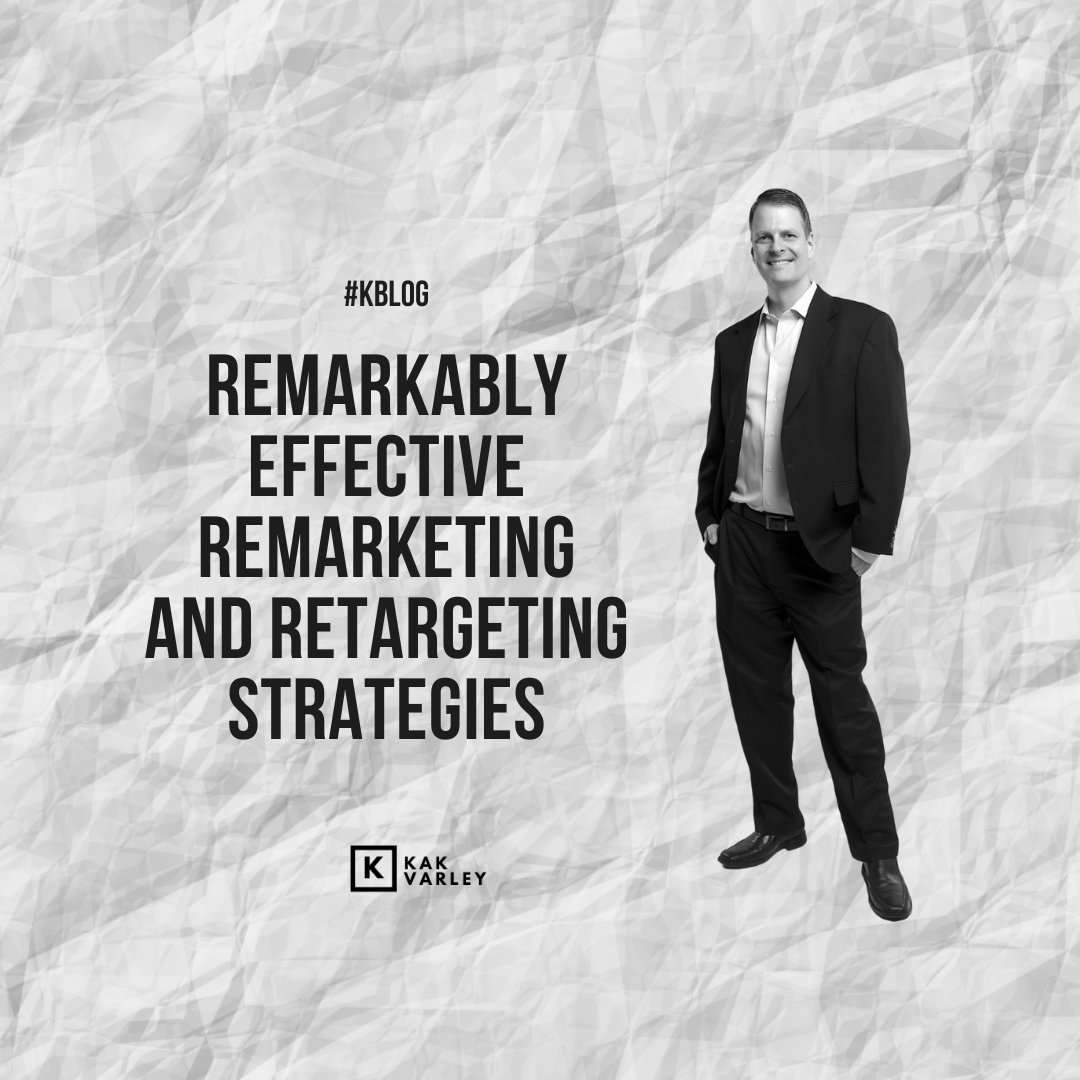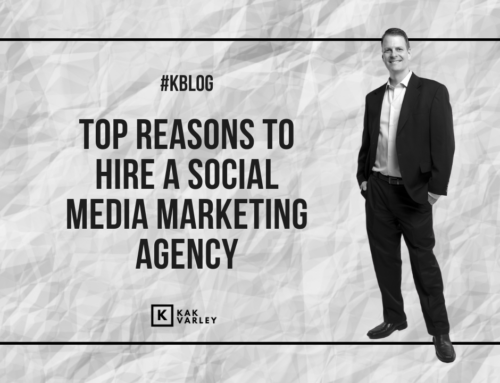
Are you looking for ways to boost your ROI and conversions? Remarketing and retargeting strategies could be the answer. These two powerful techniques allow you to target people who have already shown an interest in your products or services, increasing the chances of converting them into paying customers.
Both remarketing and retargeting refer to strategies aimed at re-engaging individuals who have previously interacted with your website, app, or brand but didn’t complete a desired action (e.g., making a purchase or signing up). These strategies involve showing them targeted ads or sending personalized messages, such as emails, to encourage them to return and take the desired action, ultimately increasing the chances of conversion. Remarketing or retargeting relies on tracking user behavior, typically through cookies, to identify and reach out to these potential customers on various online platforms. It’s a valuable tactic for keeping your brand top-of-mind and boosting conversion rates.
By using remarketing and retargeting strategies, you can stay top of mind with potential customers and encourage them to take action. These techniques are particularly effective for building brand awareness, increasing conversions, and improving customer loyalty. In the following article, we’ll explore some of the best practices for implementing remarketing and retargeting strategies to boost your ROI and conversions.
Understanding Remarketing and Retargeting
If you are looking to boost your ROI and conversions, then you need to understand the difference between remarketing and retargeting. While both strategies are designed to target people who have already interacted with your brand, they differ in their approach and goals.
Difference Between Remarketing and Retargeting
Retargeting is a strategy that targets people who have visited your website or engaged with your brand in some way, but did not convert. This strategy uses cookies to track the user’s behavior and then serve them ads related to the products or services they viewed on your website. The goal of retargeting is to bring users back to your website and encourage them to complete their purchase.
On the other hand, remarketing targets people who have already made a purchase or taken some kind of action on your website. This strategy uses email marketing campaigns to keep your brand top of mind and encourage repeat purchases. The goal of remarketing is to build a long-term relationship with your customers and encourage loyalty.
Importance of Remarketing and Retargeting
Both remarketing and retargeting are important strategies for boosting your ROI and conversions. Retargeting helps you reach users who have already shown an interest in your brand, but need a little push to complete their purchase. By serving them ads related to the products or services they viewed on your website, you can remind them of what they were interested in and encourage them to complete their purchase.
Remarketing, on the other hand, helps you build a long-term relationship with your customers. By sending them targeted email campaigns, you can keep your brand top of mind and encourage repeat purchases. This is important because repeat customers are more likely to make larger purchases and refer others to your brand.
Therefore, understanding the difference between remarketing and retargeting is crucial for any business looking to boost their ROI and conversions. By using both strategies effectively, you can reach users who have already interacted with your brand and encourage them to make a purchase or become a loyal customer.
Setting Up Remarketing and Retargeting Campaigns
When it comes to setting up remarketing and retargeting campaigns, there are a few key things to keep in mind to ensure that you’re targeting the right audience and creating engaging ads that will drive conversions and boost your ROI.
Choosing the Right Audience
The first step in setting up a successful remarketing or retargeting campaign is choosing the right audience to target. This will depend on a variety of factors, including what action you want your audience to take (e.g. making a purchase, filling out a form, etc.), what pages they’ve visited on your website, and how long it’s been since they last interacted with your brand.
To choose the right audience, you’ll need to use a retargeting platform that allows you to segment your audience based on these factors. Google Ads, for example, allows you to create custom audiences based on a variety of criteria, including website visitors, YouTube users, and more.
Once you’ve chosen your audience, you’ll need to create ads that are tailored to their interests and behaviors. This brings us to our next point.
Creating Engaging Ads
The key to creating engaging ads that will drive conversions is to make sure that they’re highly targeted and relevant to your audience. This means using language and imagery that resonates with them and highlighting the benefits of your product or service in a way that speaks directly to their needs and pain points.
One effective way to create engaging ads is to use dynamic remarketing, which allows you to show ads that are tailored to the specific products or services that your audience has shown interest in. For example, if someone has added a product to their cart but hasn’t yet made a purchase, you could show them an ad that highlights that specific product and offers a discount or other incentive to complete the purchase.
Another important factor to keep in mind when creating ads is to make sure that they’re visually appealing and easy to read. Use high-quality images and clear, concise copy that gets your message across quickly and effectively.
By following these tips and best practices, you can set up remarketing and retargeting campaigns that are highly effective at driving conversions and boosting your ROI.
Strategies to Boost ROI
To maximize your return on investment (ROI) with remarketing and retargeting, it’s essential to have a solid strategy in place. Here are some effective strategies to help you boost your ROI:
Segmentation of Audience
By segmenting your audience, you can create targeted ads that are more likely to resonate with your audience and drive conversions. You can segment your audience based on demographics, interests, behaviors, and more. For example, if you’re an e-commerce store that sells both men’s and women’s clothing, you can create separate remarketing campaigns for each gender. This way, you can show ads that are tailored to each audience and increase the chances of them making a purchase.
Dynamic Remarketing
Dynamic remarketing allows you to show ads that are personalized to each user based on their past behavior on your website. For example, if a user added a product to their cart but didn’t complete the purchase, you can show them an ad that features the exact product they added to their cart. This can be an effective way to remind users of products they were interested in and encourage them to make a purchase.
Frequency Capping
Showing your ads too frequently can lead to ad fatigue and decrease the effectiveness of your campaigns. By implementing frequency capping, you can limit the number of times a user sees your ads within a specific timeframe. This can help ensure that your ads stay fresh and relevant to your audience, increasing the chances of them converting.
By implementing these strategies, you can create more effective remarketing and retargeting campaigns that are tailored to your audience’s needs and preferences. This can help you boost your ROI and drive more conversions for your business.
Strategies to Increase Conversions
To increase conversions through remarketing and retargeting, there are several strategies that you can implement. These strategies include personalization of ads, optimizing landing pages, and cross-device retargeting.
Personalization of Ads
Personalization of ads involves tailoring your ads to specific audiences based on their interests, behaviors, and demographics. This can be achieved by using dynamic ads that change based on the user’s past interactions with your website or app. By personalizing your ads, you can increase the relevance of your ads to the user, and increase the likelihood of conversion.
Optimizing Landing Pages
Optimizing your landing pages involves designing them to be more effective at converting visitors into customers. This can be achieved by using clear and concise messaging, compelling visuals, and a strong call-to-action. Additionally, you can use A/B testing to determine which landing page design is more effective at converting visitors.
Cross-Device Retargeting
Cross-device retargeting involves targeting users across multiple devices, such as desktops, tablets, and smartphones. By retargeting users across multiple devices, you can increase the frequency of your ads and increase the likelihood of conversion. Additionally, you can use cross-device retargeting to provide a consistent user experience across all devices.
Implementing these strategies can help you increase conversions and boost your ROI through remarketing and retargeting. By personalizing your ads, optimizing your landing pages, and using cross-device retargeting, you can increase the effectiveness of your campaigns and drive more conversions.
Measuring Success
To determine the effectiveness of your remarketing and retargeting campaigns, it’s important to track and measure key performance indicators (KPIs), calculate ROI, and monitor conversion rates.
Key Performance Indicators
KPIs are metrics that help you evaluate the performance of your campaigns. Some of the most important KPIs to track for remarketing and retargeting include:
- Click-through rate (CTR): the percentage of people who click on your ad after seeing it.
- Conversion rate: the percentage of people who complete a desired action, such as making a purchase or filling out a form, after clicking on your ad.
- Cost per acquisition (CPA): the amount you spend on advertising to acquire one customer.
- Return on ad spend (ROAS): the revenue generated from your advertising compared to the amount spent on advertising.
By tracking these KPIs, you can gain insights into the effectiveness of your campaigns and make data-driven decisions to optimize your strategy.
ROI Calculation
Calculating ROI is crucial to determine the success of your campaigns. To calculate ROI, use the following formula:
ROI = (Revenue – Cost) / Cost
For example, if you spent $1,000 on advertising and generated $2,000 in revenue, your ROI would be:
ROI = ($2,000 – $1,000) / $1,000 = 1
This means that for every dollar you spend on advertising, you earn one dollar in revenue.
Conversion Tracking
Conversion tracking allows you to track and analyze the actions users take after clicking on your ad. By setting up conversion tracking, you can measure the effectiveness of your campaigns and optimize your strategy accordingly.
To set up conversion tracking, you’ll need to define your conversion goals and create a conversion tracking code. You can then add this code to your website to track user actions, such as form submissions or purchases.
By monitoring your conversion rates and optimizing your campaigns accordingly, you can improve your ROI and increase the effectiveness of your remarketing and retargeting efforts.
Case Studies of Successful Remarketing and Retargeting
Remarketing and retargeting strategies have proven to be effective in boosting ROI and conversions for businesses of all sizes. Here are a few case studies of successful remarketing and retargeting campaigns:
Case Study #1: Watchfinder
Watchfinder, a UK-based luxury watch retailer, implemented a remarketing campaign and saw a 130% increase in conversion rates. The campaign was targeted towards users who had abandoned their shopping carts on the website. Watchfinder used dynamic remarketing ads to display the exact products that the users had left in their carts, along with personalized messaging. This resulted in a 400% increase in click-through rates and a 50% reduction in cost per acquisition.
Case Study #2: Myfix Cycles
Myfix Cycles, an online bicycle retailer, implemented a retargeting campaign and saw a 300% increase in conversions. The campaign was targeted towards users who had visited the website but had not made a purchase. Myfix Cycles used retargeting ads to display products that the users had viewed on the website, along with personalized messaging. This resulted in a 200% increase in click-through rates and a 50% reduction in cost per click.
Case Study #3: Manscaped
Manscaped, a men’s grooming products retailer, implemented a retargeting campaign and saw a 400% increase in conversions. The campaign was targeted towards users who had visited the website but had not made a purchase. Manscaped used retargeting ads to display products that the users had viewed on the website, along with personalized messaging. This resulted in a 250% increase in click-through rates and a 60% reduction in cost per acquisition.
Case Study #4: Ouibus
Ouibus, a French bus company, implemented a retargeting campaign and saw a 200% increase in conversions. The campaign was targeted towards users who had visited the website but had not made a booking. Ouibus used retargeting ads to display personalized messaging based on the user’s previous interactions with the website. This resulted in a 150% increase in click-through rates and a 50% reduction in cost per acquisition.
These case studies demonstrate the effectiveness of remarketing and retargeting strategies in increasing conversions and boosting ROI. By using personalized messaging and targeted ads, businesses can reach out to potential customers who have shown interest in their products or services, and encourage them to take action.
Conclusion
Remarketing and Retargeting strategies are powerful tools that can help you boost your ROI and conversions. By targeting users who have already shown interest in your products or services, you can increase the chances of converting them into customers.
To make the most of these strategies, it is important to segment your audience and create personalized campaigns that speak to their specific needs and interests. You should also establish the right cadence and frequency of your retargeting ads so that they don’t come across as pushy or annoying to your potential customers.
Another important aspect of Remarketing and Retargeting is to keep testing and optimizing your campaigns. By analyzing your data and metrics, you can identify what’s working and what’s not, and make adjustments accordingly.
Remember, Remarketing and Retargeting are not a one-size-fits-all solution. You need to tailor your campaigns to your specific goals and audience and be willing to experiment and iterate until you find the right approach.
Overall, if done right, Remarketing and Retargeting can be a highly effective way to boost your conversions and ROI and build a loyal customer base. So, don’t hesitate to give these strategies a try and see how they can work for your business.
If you need a small business marketing consultant to help rank a blog post, Kak Varley Marketing provides digital marketing agency services to their clients. Which, remarketing and retargeting are key focuses.
Frequently Asked Questions
What are Some Effective Ways to Segment Audiences for Retargeting?
Segmenting your audience is crucial for the success of your retargeting campaigns. You can segment your audience based on their behavior, demographics, interests, and other factors. For example, you can create a segment of people who have added items to their shopping cart but haven’t completed the purchase. You can also target people who have visited specific pages on your website or people who have engaged with your social media ads. By segmenting your audience, you can create more personalized and relevant retargeting ads that are more likely to convert.
What are Some Common Mistakes to Avoid When Implementing Retargeting Strategies?
One common mistake is retargeting too aggressively. Bombarding your audience with too many retargeting ads can be annoying and counterproductive. Another mistake is not testing your ads. It’s important to test different ad formats, messages, and placements to see what works best for your audience. Finally, not tracking your results is a mistake. You need to measure the success of your campaigns and adjust your strategy accordingly.
How can you Measure the Success of Your Retargeting Campaigns?
There are several metrics you can use to measure the success of your retargeting campaigns, such as click-through rate, conversion rate, cost per click, and return on investment. You can use tools like Google Analytics or Facebook Ads Manager to track these metrics and optimize your campaigns based on the results.
What are Some Creative Retargeting Ad Formats that can Improve Conversions?
There are several creative ad formats you can use for retargeting, such as carousel ads, video ads, and dynamic product ads. Carousel ads allow you to showcase multiple products in a single ad, while video ads can be more engaging and memorable. Dynamic product ads can show personalized ads based on the products people have viewed on your website.
How can you use Retargeting to Target Customers who have Abandoned Their Shopping Carts?
Retargeting people who have abandoned their shopping carts is a great way to recover lost sales. You can create a retargeting campaign that shows personalized ads with the products they left in their cart. You can also offer a discount or free shipping to incentivize them to complete their purchase.
What are Some Best Practices For Optimizing Your Retargeting Campaigns?
Some best practices for optimizing your retargeting campaigns include testing different ad formats, messages, and placements, segmenting your audience, setting frequency caps to avoid overexposure, and tracking your results. It’s also important to use high-quality images and clear calls to action in your ads. By following these best practices, you can improve the effectiveness of your retargeting campaigns and boost your ROI.
#kakvarley #kakapproved #ktip #kblog



